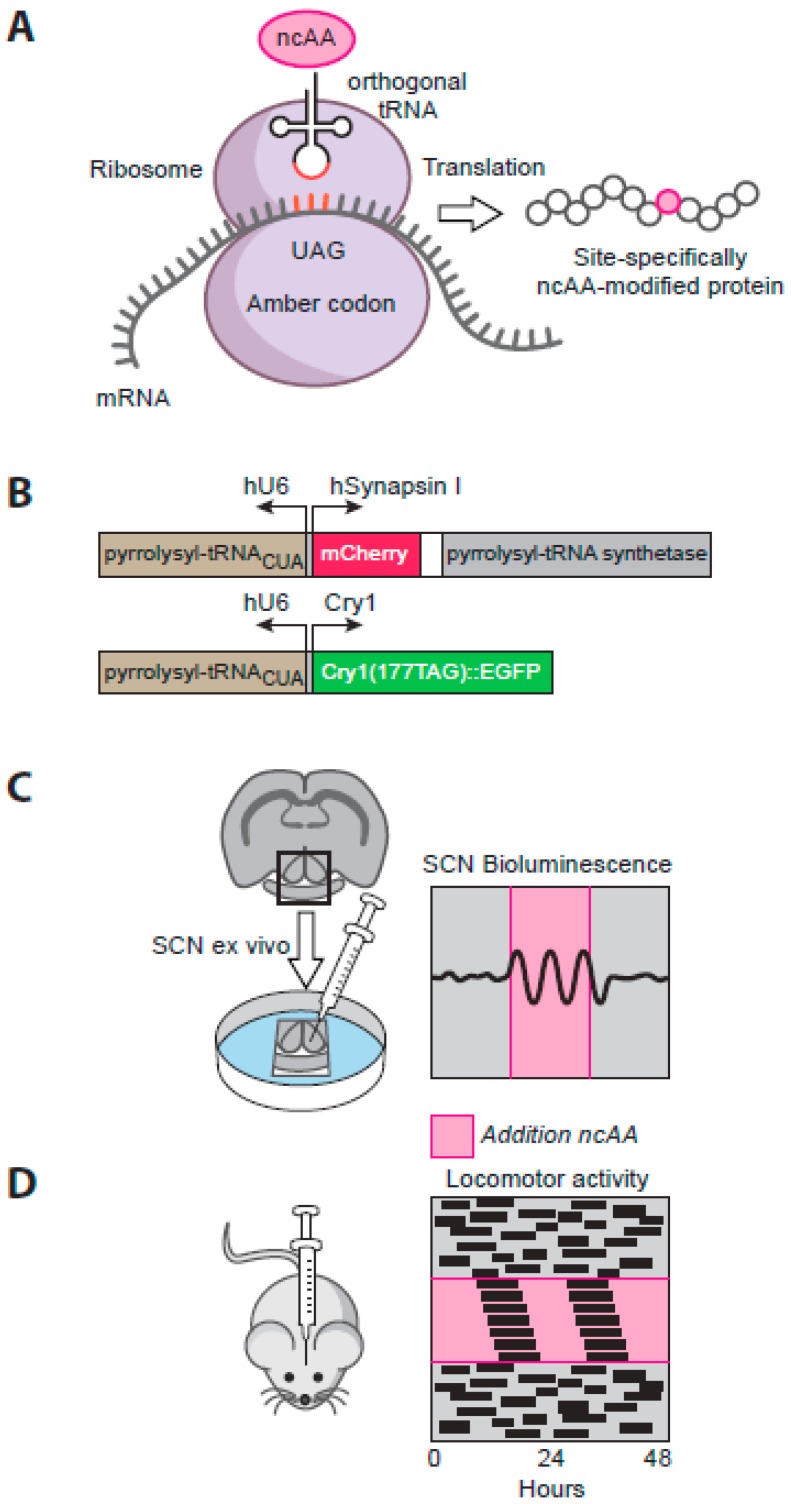Figure 3.
Translational switching: a versatile tool for reconstituting and exploring the circadian clock. (A) Schematic view of the site-specific incorporation of a non-canonical amino acid (ncAA, pink shade) during translation of a protein by using a novel aminoacyl transfer RNA (tRNA) (charged by a novel tRNA synthetase) that recognises the amber stop codon, thereby allowing translational read-through. (B) Constructs encoding the orthogonal tRNA and tRNA synthetase, alongside the amber-sensitive Cry1::EGFP, both delivered to SCN cells by AAV vectors. (C) In arrhythmic Cry-null SCN slices, pre-transfected with the two AAV vectors, delivery of ncAA (pink shade) initiates a circadian rhythm (reported as Per2-driven bioluminescence), which is lost immediately on withdrawal of ncAA. (D) In arrhythmic Cry-null mice, pre-transfected with the two AAV vectors directed at the SCN, delivery of ncAA (pink shade) in drinking water initiates a circadian behavioural rhythm, which is lost immediately on withdrawal of ncAA.

